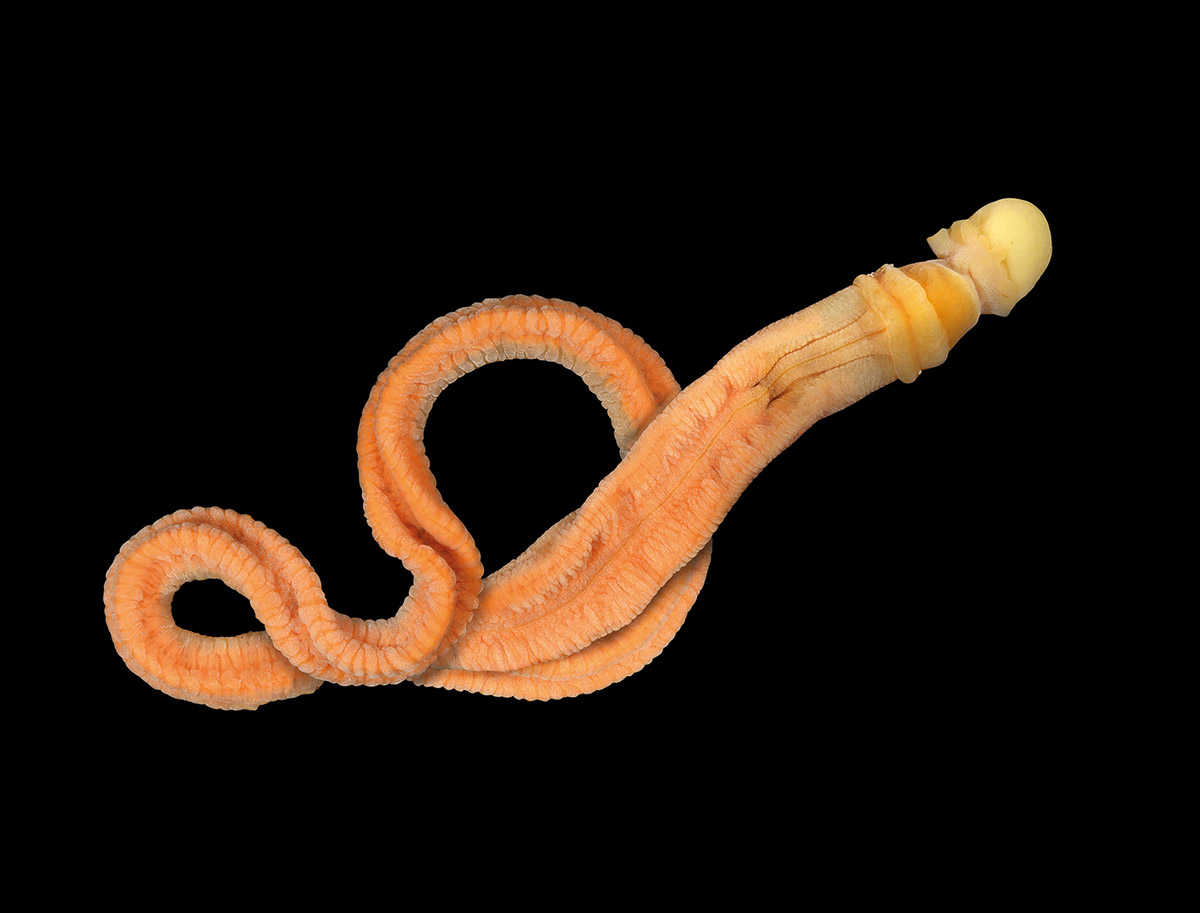
You have probably never seen an acorn worm, despite them being plentiful in coastal waters around the world, from the tide line down to abyssal depths, with more than 100 known species. However, you are likely to have seen the strange casts of extruded sand that many species leave outside their burrows. The species pictured above is found around the UK and in northern European waters. All acorn worms belong to a group of hemichordates called Enteropneusta. They are thought to be an intermediary between invertebrates and vertebrates. Most live in burrows in the seafloor, often U-shaped; others hide under rocks. Their soft, fragile, worm-like bodies break apart if handled. They are filter-feeders, have an acorn-like proboscis, and they breathe by means of gills. The largest species, Balanoglossus gigas, can reach 1.5 metres in length; with most other species between 9 and 45cm long. Recently, scientists have discovered that they can regenerate body parts. If one is cut in half, it can regrow a new head and tail within 15 days. If we can crack the DNA code used, it is possible that humans could regenerate limbs by the same process, as we share similar genes.


